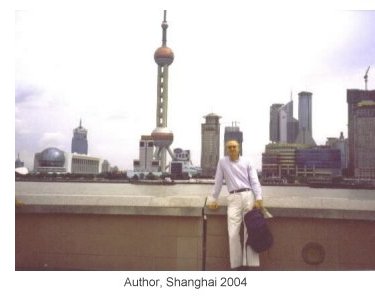

|
| weblog/wEssays | home | |
|
Air Pollution and China's Future (September 22, 2005)  A new epidemiological study reported in
Scientific American Online this week highlights the long-term dangers of air pollution.
A new epidemiological study reported in
Scientific American Online this week highlights the long-term dangers of air pollution.
"They found that as the number of fine particles less than 2.5 microns in diameter increased, so, too, did the risk of dying: each jump of 10 micrograms per cubic meter corresponded to a 11 to 17 percent increase in the risk of dying from any cause."Particulates are generally measured as either PM-10 or PM-2.5, indicating concentrations per cubic meter of particles either 10 microns or less in size or 2.5 or smaller. The Average Annual Mean for PM-10 in central Los Angeles is around 44. By comparison, some cities in China have levels ten times higher. Consider this excerpt from report from the U.S. Embassy in China: "The average concentration of total suspended particulates (TSP) in the city in 1998 was nearly 600 micrograms per cubic meter, according to the World Resources Institute. Local health experts say about 80 percent of Taiyuan’s suspended particles are "respirable" (less than 10 microns in diameter). This would imply the average concentration of lung-damaging PM10 is more than 450 micrograms per cubic meter — nine times the U.S. standard for annual exposure. Add in high levels of SO2 and nitrogen oxides (NOx) and Taiyuan’s composite air pollution index regularly tops the list among China’s 42 major cities."So let's do the math. If a rise of only 10 PM-2.5 causes a 10 to 15% increase in mortality, what would a concentration of 100 to 200 PM-2.5 do to a population's health? It would obviously drive a significant percentage of residents to an early grave, and indeed, anecdotal evidence suggests many urban Chinese are dying in their 50s and 60s from the very lung and heart diseases exacerbated by severe air pollution. When you consider the total urban population in China is 515 million people, the terrible human toll of this air pollution becomes clear. For a summary of China's horrendous pollution problems, read this September 2004 report from the Washington Post and my own essay China: An Interim Report. By all accounts, the Chinese government is aware of the dangers and is moving to reduce air pollution; but the policy changes are obviously not deep enough or fast enough to significantly improve public health in urban China. For an overview of global urban air quality, take a look at this World Bank chart of air quality of major cities around the world. It appears to seriously under-report particulates in China's cities, as Taiyuan's particulates per cubic meter is listed as 105, while the U.S. Embassy report states it's nearly 600 PM. Though that difference suggests gross under-reporting of actual concentrations, the chart still provides a comparison of global cities' air quality. For a list of the U.S. cities' rankings in air quality, check out American Lung Association Chart of the 25 U.S. Cities with the Worst Air Pollution And lest you think it's a localized urban risk, think again; it's a global problem * * * copyright © 2005 Charles Hugh Smith. All rights reserved in all media. I would be honored if you linked this wEssay to your site, or printed a copy for your own use. * * * |
||
| weblog/wEssays | home |